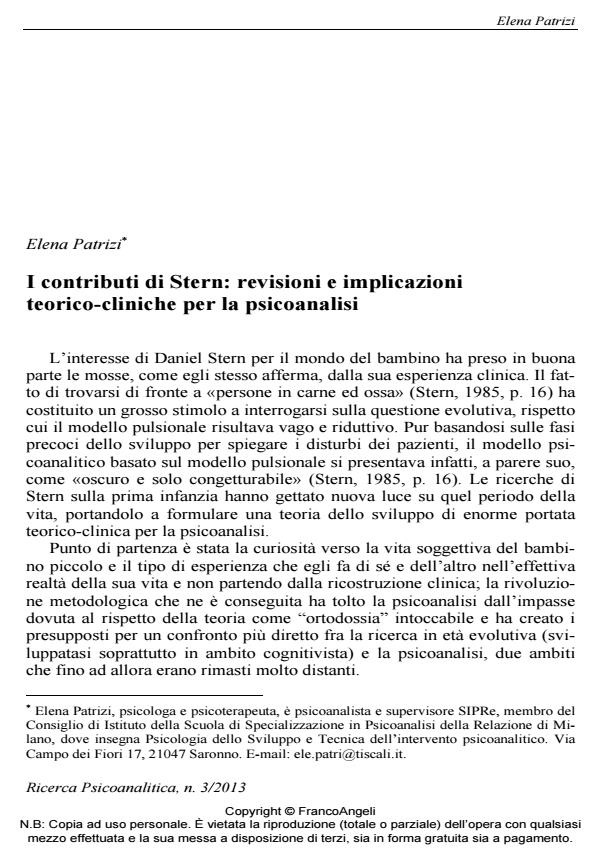The work of daniel stern. revisions and theoreticalclinical implications for psychoanalysis
Journal title RICERCA PSICOANALITICA
Author/s Elena Patrizi
Publishing Year 2013 Issue 2013/3
Language Italian Pages 12 P. 9-20 File size 635 KB
DOI 10.3280/RPR2013-003002
DOI is like a bar code for intellectual property: to have more infomation
click here
Below, you can see the article first page
If you want to buy this article in PDF format, you can do it, following the instructions to buy download credits

FrancoAngeli is member of Publishers International Linking Association, Inc (PILA), a not-for-profit association which run the CrossRef service enabling links to and from online scholarly content.
Curiosity for the subjective experiences of children is the starting point of Daniel Stern’s work that belongs in the field of infant research. Stern built a theory of development based on the existence in infants of early social, emotional and cognitive abilities that he considered as innate and capable of maturing. These abilities allow infants to build an active relationship with their environment. The importance of Stern’s work lies in the fact that he used experimental data and observations to formulate his hypotheses on the development of the sense of self that played a revolutionary role in psychoanalysis both at theoretical and methodological level, opening up new perspectives and building a bridge between psychoanalysis and experimental research. The description of infants as capable and active beings, subjects interacting with other subjects, challenged the concepts of drive theory, focused infancy and childhood research on the study of infant-adult interactions and led psychoanalysis to formulate a theory of the subject and a technique of intervention more consistent with the interactive nature of human beings.
Keywords: Daniel Stern, theory of development, infant observation, sense of self, infant- adult interactions, psychoanalytical technique
Elena Patrizi, I contributi di Stern: revisioni e implicazioni teorico-cliniche per la psicoanalisi in "RICERCA PSICOANALITICA" 3/2013, pp 9-20, DOI: 10.3280/RPR2013-003002